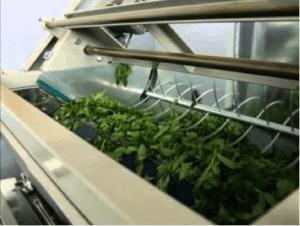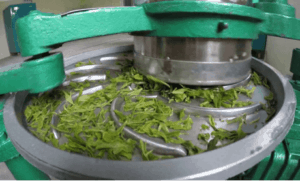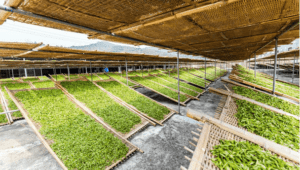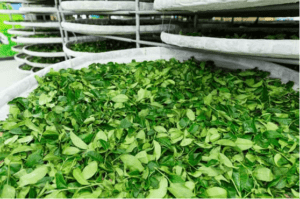
Producing high-quality tea leaves demands careful cultivation, close production control, and meticulous attention to every step of the process. These factors contribute to the diverse range of teas and their unique flavors. A key aspect of producing exceptional tea leaves lies in the natural environment, including the terrain and climate. Harvesting typically begins in May with the first flush, known for its high nutritional content. The best young shoots from this harvest are called ichibancha (一番茶), and only the youngest, greenest leaves are selected to become namacha (生茶) or “fresh tea.” These young leaves then undergo several main processing steps:
1. Withering: Fresh tea leaves are dried at room temperature for 8-24 hours to reduce moisture content by 50-60%. This process softens the leaves, making them pliable for the next steps.
2. Rolling: Leaves are rolled to release essential oils, which enhances the tea’s aroma and flavor. This process may be done manually or using machinery, and it gives the leaves a characteristic shape. In the case of matcha production, the leaves are not rolled but instead ground into a fine powder using a stone mill at a consistent speed.
3. Oxidation/Fermentation: Oxygen interacts with enzymes in the tea leaves, affecting their aroma, flavor, and color. This process is crucial in determining the type of tea, such as green tea, black tea, or oolong. If oxidation is stopped too early, the tea retains a green hue and may have a metallic taste. If allowed to ferment too long, it can become overly sweet and lose its characteristic aroma.
4. Drying/Heating: Heat is applied to the leaves at 120-200°F to halt the oxidation process and ensure even drying. There are two methods: steaming at 100°C to preserve the green color, or roasting, which results in darker, drier leaves. Excessive heat, however, can strip the tea of its flavor, aroma, and color.
5. Grading: After drying, the leaves are sorted using sieves to ensure uniformity in size and quality. Not all types of tea undergo this step, but it is a standard part of the overall process for many varieties.
Each type of tea undergoes slight variations in these steps, leading to different taste profiles, such as:
– White Tea: This type undergoes minimal processing, with no rolling or oxidation. Young leaves are quickly dried, preserving a light green and white appearance.
– Black Tea: Fully oxidized, black tea goes through the most extensive fermentation. The leaves are about 80% dry before becoming black tea, but over-drying can diminish their aroma.
– Oolong Tea: Oolong is sun-dried for about 6 hours, then gently shaken in bamboo baskets to bruise the edges of the leaves. It is partially fermented, with a shorter oxidation time than black tea, followed by higher heat to stop fermentation.
– Green Tea: To maintain its vibrant green color and high levels of beneficial compounds, green tea is dried, then either steamed or pan-fired to stop oxidation. It is then rolled and quickly dried. Green tea can be further categorized into steamed green tea and roasted green tea:
1.1 Steamed Green Tea: The leaves are briefly steamed at 100°C to deactivate the enzyme polyphenol oxidase, preserving their vibrant green color.
1.2 Roasted Green Tea: The leaves are roasted in a hot pan at 300-350°C and kneaded until the cells break. Roasted green tea can be lightly fermented or completely unfermented, resulting in a light green tea with a yellow tint. The intricate steps involved in tea production can be visually summarized in the diagram below, offering a clear overview of this nuanced process.





